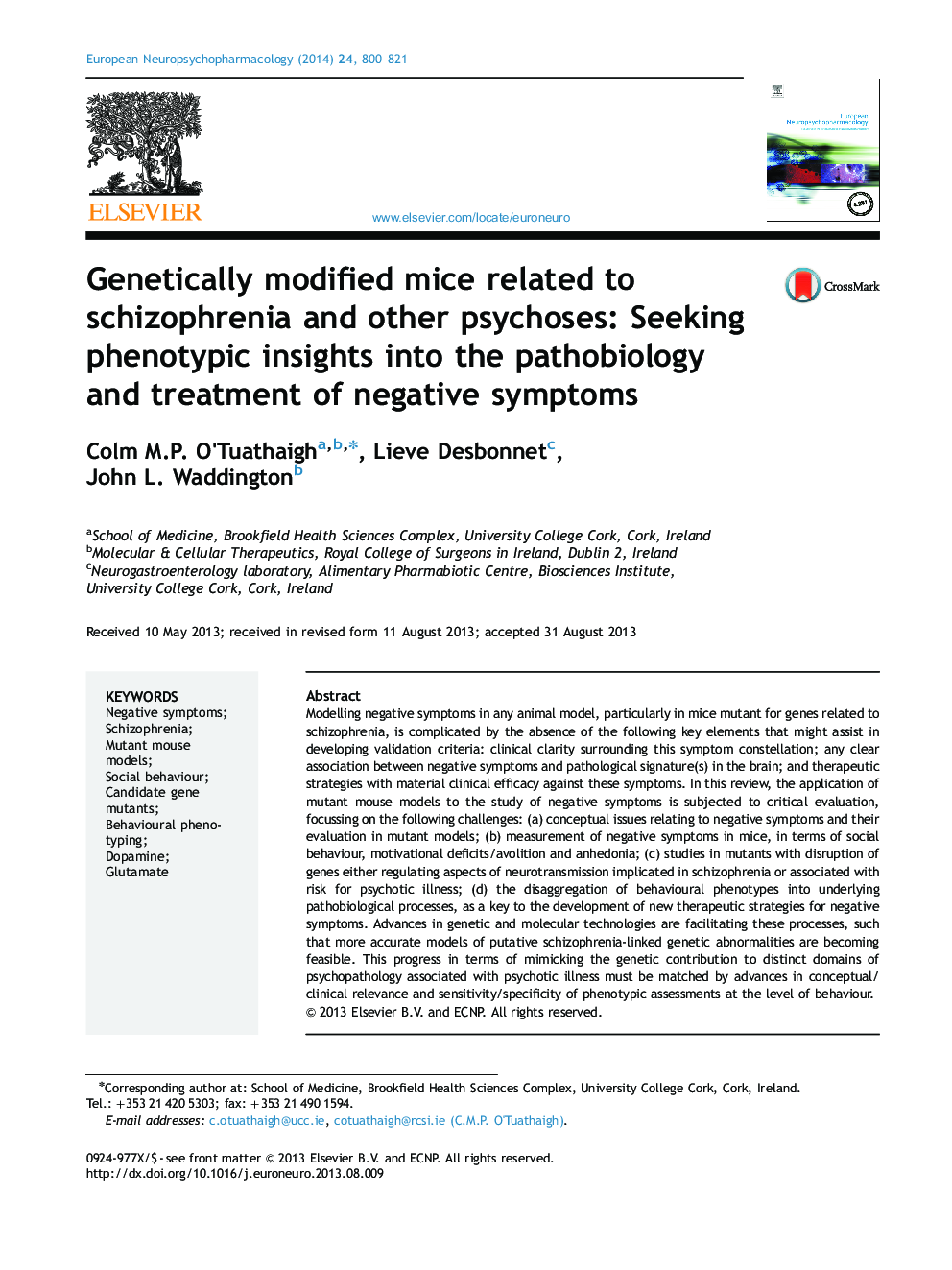| Article ID | Journal | Published Year | Pages | File Type |
|---|---|---|---|---|
| 10299020 | European Neuropsychopharmacology | 2014 | 22 Pages |
Abstract
Modelling negative symptoms in any animal model, particularly in mice mutant for genes related to schizophrenia, is complicated by the absence of the following key elements that might assist in developing validation criteria: clinical clarity surrounding this symptom constellation; any clear association between negative symptoms and pathological signature(s) in the brain; and therapeutic strategies with material clinical efficacy against these symptoms. In this review, the application of mutant mouse models to the study of negative symptoms is subjected to critical evaluation, focussing on the following challenges: (a) conceptual issues relating to negative symptoms and their evaluation in mutant models; (b) measurement of negative symptoms in mice, in terms of social behaviour, motivational deficits/avolition and anhedonia; (c) studies in mutants with disruption of genes either regulating aspects of neurotransmission implicated in schizophrenia or associated with risk for psychotic illness; (d) the disaggregation of behavioural phenotypes into underlying pathobiological processes, as a key to the development of new therapeutic strategies for negative symptoms. Advances in genetic and molecular technologies are facilitating these processes, such that more accurate models of putative schizophrenia-linked genetic abnormalities are becoming feasible. This progress in terms of mimicking the genetic contribution to distinct domains of psychopathology associated with psychotic illness must be matched by advances in conceptual/clinical relevance and sensitivity/specificity of phenotypic assessments at the level of behaviour.
Keywords
Related Topics
Life Sciences
Neuroscience
Biological Psychiatry
Authors
Colm M.P. O'Tuathaigh, Lieve Desbonnet, John L. Waddington,
